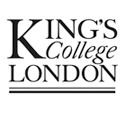Medicated Sleep and Wakefulness

Funder
Economic and Social Research Council
Start Date: 01/04/2011 Duration: 33 months
Research Team
Professor Jonathan Gabe, Royal Holloway, University of London (Principal Investigator); Professor Simon J. Williams (Co-Investigator), University of Warwick; Professor John Abraham, Kings College, London (Co-Investigator); Dr Catherine Coveney, University of Warwick (Research Fellow).
Background
Recent years have witnessed an upsurge of concern, in professional and popular culture, about the nature and extent, costs and consequences of poor sleep for society, including the public health and safety implications of sleep deprivation and sleep disorders at home, at school, in the workplace and in later life. Early findings from the ESRC longitudinal Understanding Society survey (wave 1), for example, indicate that some 27% of respondents report short sleep duration of under 6.5 hours per night, with strong associations between disadvantaged socio-economic circumstances and sleep problems as well as short sleep duration; thereby suggesting, in addition to factors such as age and gender, that 'the better off' really do 'sleep better' (http://www.esrc.ac.uk/impacts-and-findings/features-casestudies/features/15158/pillow-talkpart-1.aspx).
Concerns, at one and the same time, continue to be voiced about the ‘appropriate’ role of pharmaceutical treatments for sleep problems, including both sleep promoting drugs (i.e. prescription hypnotics) and wakefulness promoting drugs such as Modafinil. These concerns, for example, include: (i) the efficacy of prescription hypnotics over other non-pharmaceutical forms of intervention or treatment (e.g. promotion of good sleep hygiene, cognitive behaviour therapy) and related issues of risk and quality of life (e.g. risks of dependency, accidents); (ii) the socio-demographic profile of prescription hypnotic users (i.e. 9% of men and 10% of women in the latest ESRC survey data, with strong linear age gradients, especially for women) and; (iii) debates over the merits of wakefulness promoting drugs not simply for the medical treatment of excessive sleepiness but for social or recreational purposes in the 24/7 era (e.g. amongst shift workers, in safety critical occupations, in corporate contexts, in educational settings, as a ‘lifestyle’ drug etc.).
It is within this context that the present study is located.
Key Findings
Summary Report, May 2015
Sleep Apneoa Report (Preliminary Draft)
Narcolepsy Report (Preliminary Draft)
West Midlands Ambulance Service (WMAS) Report
Publications and other outputs
Conflicts of Interest
None -- independently funded, investigator-led study.
Further details on project team members expertise can be found at the following websites:
Professor Jonathan Gabe, Royal Holloway, University of London
Professor Simon J. Williams, University of Warwick
Professor John Abraham, King's College London
Dr. Catherine Coveney, University of Warwick/ University of Sussex



